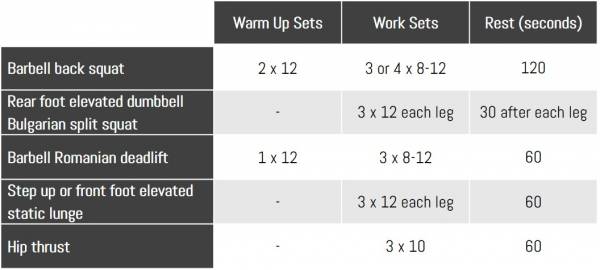Developing your backside may not be very high on your priority list. It’s commonly thought of as a woman’s issue, but whether you’re training for strength, function, or aesthetics, nothing could be further from the truth.
Aside from being the biggest muscle group in the human body, the glutes represent a crucial component of overall strength. They are Grand Central Station for every major movement and lift, and weak glutes mean weak lifts. Even when they aren’t the primary movers, such as during standing overhead press or bent-over rows, the glutes could be the little-known secret to moving bigger weight that you might be overlooking.
Make Your Bottom Your Top Priority
Many lifters will scoff at the notion that they may need better glute habits. But there are several factors to consider when you’ve decided to take your glutes, ahem, I mean matters into your own hands.
- For strength: Your glutes play a pivotal role in strength as it relates to a number of exercises. They are a crucial link in squats, deadlifts, step ups, lunges, and leg presses, as well as a key component in performance for running, sprinting, jumping, and other explosive moves.
- For health: Since your glutes play such an important role in everyday tasks, your literal mobility is directly affected. The weaker your glutes, the more difficult everyday movement will be. Getting to and from a sitting position, walking for long periods, and working with daily tasks can be greatly influenced by your glute development.
- For mobility: Many lifters complain of low back pain, and proceed to extensively stretch their hamstrings and lower back, hoping to alleviate the problem. Unfortunately, for some this doesn’t do the trick. For some of us with lower back discomfort, tight glutes may be to blame. This unseen problem muscle group can be the thorn in your side preventing you from performing squats and other lifts optimally. Be sure to adopt a thorough mobility routine for your glutes, and do it daily if necessary.
- For aesthetics: Last, nobody wants a flat butt. You want to fill out a pair of jeans, right? One of the goals that may have gotten you into lifting in the first place was gaining muscle to look good naked, or at least in swim trunks at the beach. Well-developed glutes round out (pun intended) a physique nicely.
Get Off Your Butt
One of the biggest drivers of back pain and loss of overall strength is the increasing act of sitting. Go to any place of business, doctor’s office, mechanic, or car wash, and the first thing that people do once they’re informed there will be a wait is to look for a place to sit down. All the sitting we do literally flattens the backside and helps to weaken this area. If you don’t use it, you lose it. The average healthy individual needs to stand more.
If you need to wait on your car to be repaired, go out and take a walk. Buy a stand-up device for desk work, if you work in an office. Conduct walking meetings when there are only a few participants. Whatever you can do try to circumvent the act of constantly sitting is the first step toward better glute health.
Heavy Hitters for Glute Development
I’m not about to get into the magazine programs that have you performing countless “unique exercises” that isolate your glutes. For you to get any real benefits from those types of routines, you would have to be in the gym exclusively training your butt for hours at a time. Who has time for that? Instead, I want you to get the most bang for your buck; to train in the most optimal, efficient, and effective way possible.
There are many exercises that involve your glutes directly and indirectly, so below is a list of the heavy-hitters. Most of these exercises have carryover for glute development, so you’re not in the gym doing hundreds of reps of cable kickbacks or leg lifts with ankle weights. These are designed to build strong, functional glutes that serve a purpose.
The hip thrust is probably the most effective glute developer around. Start with just bodyweight, and then move up to a weight plate or a barbell place across your lap for added resistance. The trick is to perform this exercise in a slow and controlled manner, without haphazardly thrusting your hips with no purpose.
Step Ups
You’ll need to use a bench or box tall enough so you’re bending your knee at a 90° angle when you step up. Another tip is to press up though your heel instead of your toes. That way more emphasis will be placed on your glutes.
Back Squat and Deadlift
Few movements stimulate glute development like back squats and deadlifts. Your glutes provide a foundation of support for each lift. Without strong glutes, your numbers will never climb. The Romanian deadlift in particular enables you to use a great deal of weight and place your glutes and hamstrings in a stretch position that is rare with most exercises. Be sure to hinge at your hips, and not at your lower back.
Much like a lunge, this exercise will enable you to use a much better range of motion while stretching your glutes. Much of the load will be focused on the glutes through the stretched and contracted phases, giving your glutes one heck of a workout.
Front Foot Elevated Static Lunge
As a cross between a single leg squat and a static step up, the front-foot-elevated lunge places a deeper range of motion on your front leg, therefore giving your glutes a better stretch. Allow your trailing knee to either lightly touch the floor or stop an inch or so above.
Light ‘Em Up
Give the following workout a try twice per week to fire up your glute development. You can also perform this workout once per week in addition to your regular leg day.







